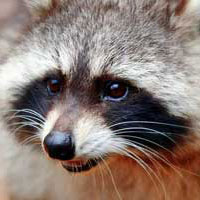What do I do if there's a raccoon in my shed?
Between January and late August we always assume that a raccoon building a den or finding shelter is a mother with babies. Removing the mother from this situation is not the best option because the last thing we want to do is abandon the babies. That being said, many people do nothing at all and typically the raccoons will only use this location for a short period of time. But unfortunately, allowing a family of raccoons to nest in or under your shed could cause a lot of damage to your property and put your family in danger of disease or attack.
Raccoons carry many diseases that can be contracted to humans through their feces. To learn more about these diseases please see ‘Raccoon feces’.
Raccoons can also be very aggressive when protecting their babies, and if you have children of your own, letting these raccoons stay is definitely NOT the right solution. Any wild animal will be instinctually protective of their children and will react accordingly when they think danger is a foot.
There are a few techniques you can try yourself to encourage the mother raccoon to move her babies.
- Turn on as many lights as possible in the shed.
- Turn on a talk show radio station near the den entrance.
- Soak some rags in Ammonia and leave them near the den entrance.
These “do it yourself” tips are not always effective, but can help alert the mother that this area is no longer safe for her babies. Using one of these techniques will definitely not be effective. Most times you must be persistent for a least a few days and nights with all three of these techniques to see any results – but raccoons are very intelligent and may realize there is no immediate threat.
During the breeding season, the only available option to get rid of nuisance wildlife is live trapping. If we set up a live trap and capture a mother raccoon, we must check to see if her nipples are enlarged and swollen – this is the main way of determining if there is also young in the den. At this point the babies would also be removed. There are two options in regards to what to do with the raccoons – translocation or euthanization. As unfortunate as it may seem, humane euthanizing is the best option in regards to permanent removal of nuisance wildlife. Hawkeye Bird and Animal Control is the only company in Canada with licenced trappers with the ability to euthanize. This will ensure they will not return. There is an option to release trapped raccoons within one kilometer of their found location, but raccoons can travel up to six kilometers in a day and can end up back in the same area very easily. There are also strict guidelines in regards to proper habitat and land owner permission when releasing an animal in a new location. To find out more about why this is not an ideal option, please see ‘Translocation’.
During the off-season, a device called a one way door can be used. This allows the raccoons to exit the den, but not return back in. The main reason this cannot be used during breeding season is that the mother raccoon will not be able to re-enter to tend to her young. In certain cases we must remove raccoons with catch-poles if they need to be removed immediately and can be approached directly.
Each raccoon problem is different and requires a customized solution. Hawkeye Bird and Animal Control can discuss your options with you and decide what is best for your particular situation and your desired outcome. Please do not attempt to trap or remove raccoons by yourself as this is illegal and very dangerous. Call the professionals at (416) HAWK-EYE for a quick and effective solution for your nuisance wildlife.
Related Articles: Are Raccoon Babies Dangerous?
















